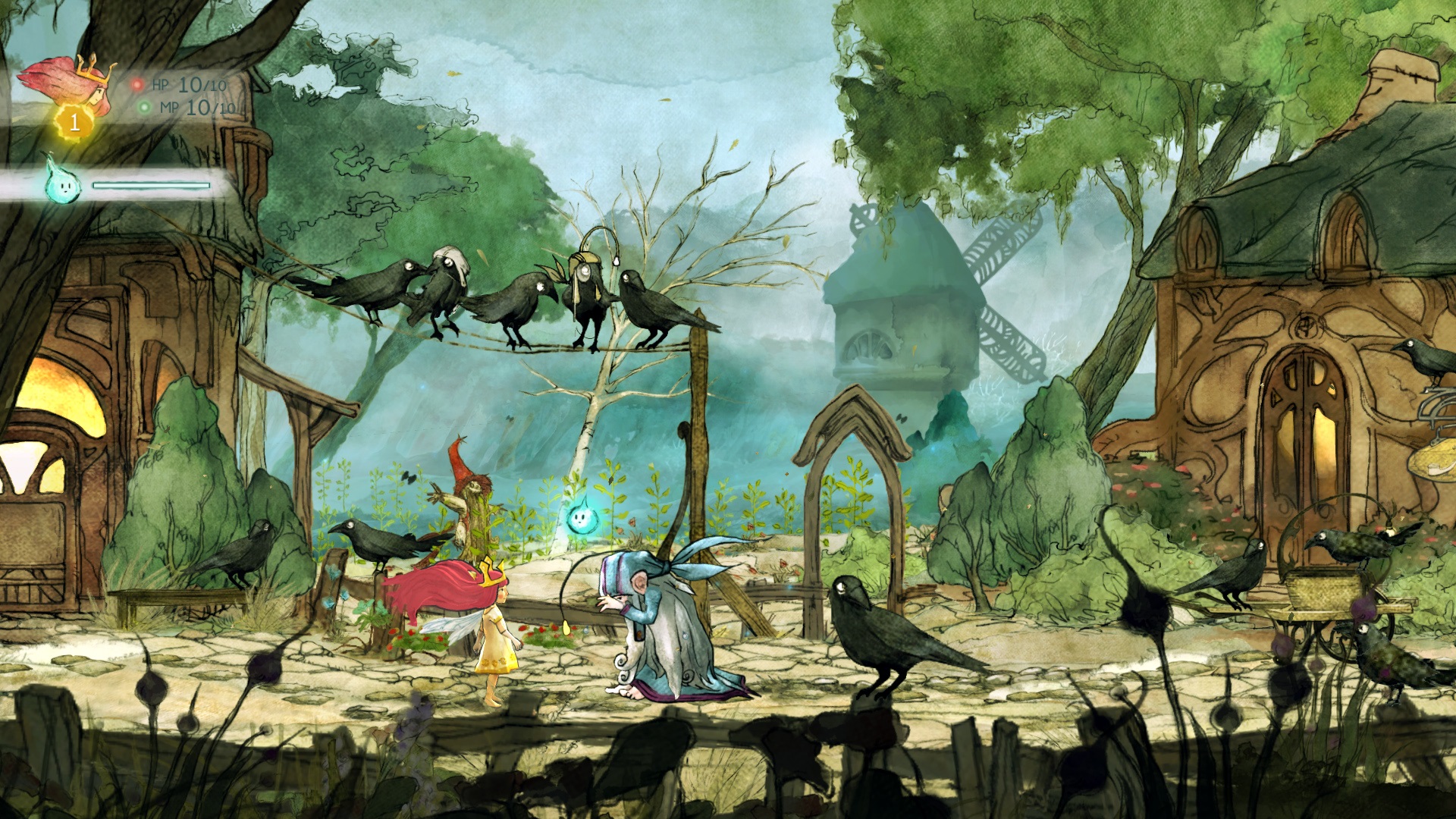Child of Light - Review
Child of Light is so staggeringly beautiful that it’s not uncommon to find its presentation entirely overpowering that game underneath. Pastel colors swirl lushly through the environments, soft details illuminating a world lost in darkness, as wondrously animated heroines fly onward curiously taking in places as foreign to them as the player. Elegant piano melodies accompany you in the background, often joined by your own flute before coming to crashing crescendos when a fight inevitably breaks out. It’s the sort of all-encompassing grace and artistry that it’s easy to become so swept up in it that when the game itself comes into focus it almost feels unnecessary, maybe even somewhat annoying as it pulls you out of your marveling as you're asked to take part in tasks rather a lot less captivating.
That game revealed itself to be a turn-based RPG, rather surprisingly large in scope yet scaled down so as to encompass a game far shorter than those it borrows elements from. There are quests to clear, huge skill trees to unlock, an ever-growing party to manage, items to craft, and limitless enemies to take on. It’s ambitions are at once impressive, and a tad overwhelming, giving you so much to manage and consider that I was rather quickly lost in a sea of items and unlocks.
Child of Light is constantly giving you more stuff, but it doesn’t take long to see that much of it is superfluous, bogging the player down with perceived options while burying the ones you actually want. The intimidating skill tree quickly becomes much less so as the levels and skill points begin to roll in at a generous pace, but the reward you’re met with always feels intangible and minor. Points add upon points to stats that never feel important, informing you you’re apparently getting stronger but never feeling like you’ve actually grown.
CRAFTING IS CONVOLUTED AND BLOATED
The initially obscure crafting system spirals into inventory chaos, as you’re loaded down with materials that are more tedious to use than beneficial. Outfitting my party so as to broaden my elemental effect was only as useful as I was able to remember who was using what in the continual swapping of materials, as I attempted to build more useful items but inevitably ended up weakening someone in the process. The lack of any guide as to the uses of different objects you can craft left me switching awkwardly between menus, testing loadouts before heading back in to actually make them. It’s convoluted and by the end I’d given up trying to make anything more from the system than I already had, hoping it was enough to get me through battles.
Combat is one of the few areas that’s more often than not actively engaging, utilizing an interesting turn system that’s more reliant on timing than just beating enemies down as hard as you can. The idea is if you position enemies on the timeline so as to attack them when they enter the last portion and are preparing to attack, you can beat them back and effectively skip their turn, which if done properly can see you continually attacking without the enemy ever getting a word in. It’s the sort of turn system that requires you always be engaging and anticipating the enemy, and when paired with the various moves of your different party members and differing enemy weaknesses can give you a lot to think about and be really satisfying to succeed with.
But as with all of Child of Light, you’re given far more than its systems can sustain, with enemies constantly pouncing you at every moment. After a point I began to run mostly on autopilot, so accustomed to an enemies patterns that they were no longer threats, but obstacles standing between me and what I hoped would be new things to fight if only I could get through to the next chapter. Even boss fights which are easily the most imaginative and interesting fights in the game, become agonizingly slow sets of attacks as you whittle away at an enormous invisible healthbar even as the boss becomes entirely helpless.
The only place Ubisoft shows an amount of restraint is in Child of Light’s simple, endearing narrative which blends its fairy tale bedtime story with that of a young girl’s coming of age and learning how to deal with the responsibilities newly put upon her. It’s intentionally cliché at times, though in a way that’s comfortingly familiar, while still subtly subverting its tropes to allow a refreshing portrayal of a story you already know before it’s even begun. The choice of writing it entirely in verse isn’t as consistently successful, changing stanzas so often that trying to follow its rhyming is a small challenge, and the necessity of rhyming causes lines to sometimes read silly or feel forced.
Final Word
Child of Light is an imperfect, exquisite creation, sometimes hard to love but yet difficult to pull yourself out of. I loved my time with it, even as I was becoming confused and annoyed at systems that often felt underdeveloped, finding trouble dismissing something so stunning and unexpectedly ambitious. It’s flaws are obvious and needing to be acknowledged, but I wanted so much not to, as my initial impression of unbelievably beauty continued to guide me through a game easily obscured by the creativity draped around it.



